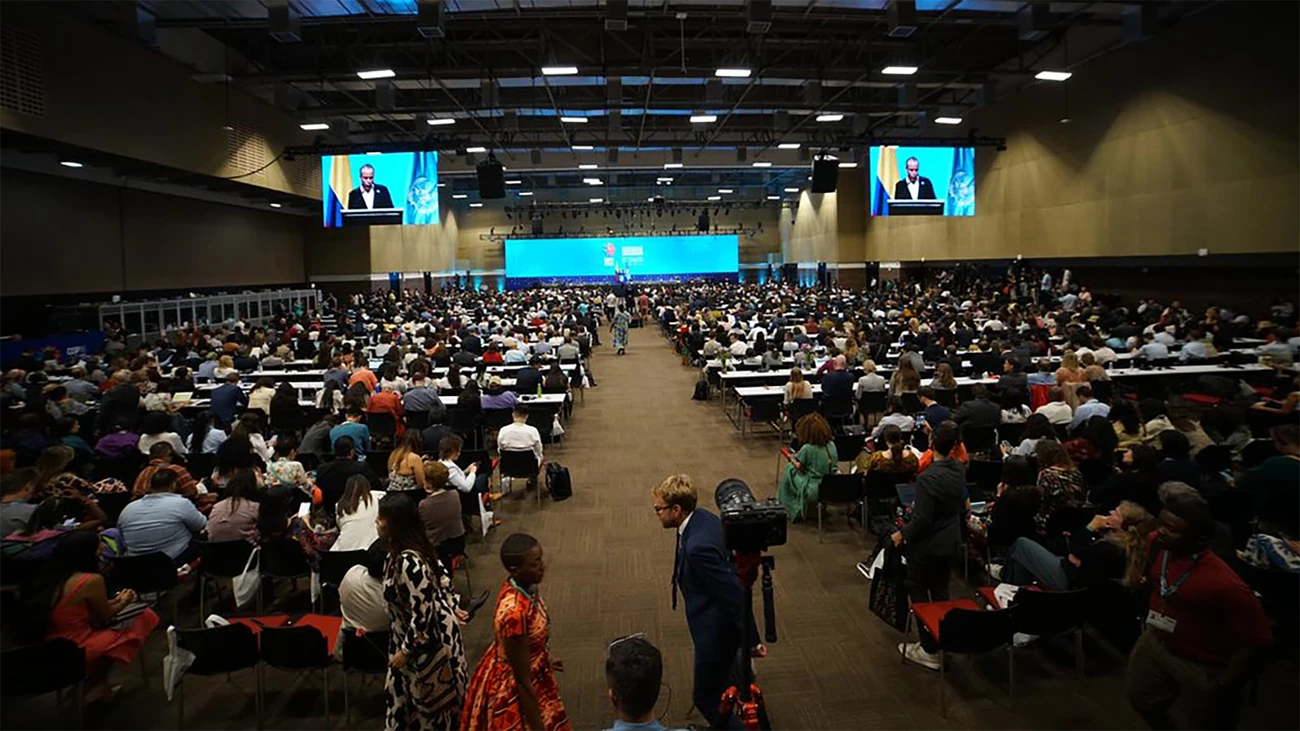
- Name:
- Anna-Karin Modin-Edman
- Title:
- Senior biodiversity specialist in Group Sustainability
With just few days remaining until the 16th Conference of the Parties (COP16) of the Convention on Biological Diversity in Colombia, many countries are struggling to meet key commitments made at COP15. As only less than 20% of 196 nations have submitted their national plans, concerns mount over the ability of world leaders to take action on the ambitious targets set in the Global Biodiversity Framework. Policymakers, industries and the financial sector must now collaborate urgently to address the biodiversity crisis and secure a sustainable future for ecosystems worldwide.
With only few days to go before global leaders convene in Cali, Colombia, for COP16, concerns are growing over the failure of many countries to meet their commitments under the Global Biodiversity Framework. The 23 targets, agreed upon during COP15 in 2022, aim to reverse biodiversity loss, but only less than 20% of the 196 nations have submitted their National Biodiversity Strategy and Action Plans (NBSAPs) as required.
Among those countries postponing their submissions are Sweden, Finland and Germany. The reasons for the delays are likely rooted in the complexity of the issue. Effective biodiversity policymaking requires a comprehensive understanding of ecosystem conditions and the pressures that drive biodiversity loss – factors that are inherently dynamic and difficult to manage. When combined with location-specific conditions and trade-offs with other societal goals, the task becomes even more challenging. This makes capacity building, especially at the local level, an essential step in ensuring actionable progress.
For industry, regulatory clarity is critical. Aligned regulation forms the foundation for a level playing field and is key to get funding frameworks in place to unleash the potential of investments in technology, new business models and innovative solutions to reduce the pressures on nature. The urgency extends to scaling up funding for nature conservation and restoration efforts. The financial sector, alongside public funding, plays a vital role in delivering on the USD 200 billion per year goal by 2030, as outlined in the Global Biodiversity Framework.

Image from COP 16, UN biodiversity.
Concerns are growing over the failure of many countries to meet their commitments under the Global Biodiversity Framework
Instruments like biodiversity credits are receiving increased attention, with the World Economic Forum estimating that global demand for credits could reach USD 2 billion by 2030 and a staggering USD 69 billion by 2050. The European Union (EU) and key leaders, such as European Commission President Ursula von der Leyen, have been vocal in their support for developing business models in line with the development of bio credits. This rising focus on biodiversity finance is evident in COP16’s agenda, with a pavilion dedicated specifically to nature finance, emphasising the integration of finance and nature across all sectors.
There is a growing sense of urgency, and collaboration across sectors is essential to overcoming the existing challenges. COP16 offers a crucial platform for negotiating and enacting several key outcomes, which could mark a turning point in biodiversity protection and restoration. Hopefully, COP16 will result in:
As global leaders prepare for the negotiations at COP16, the stakes could not be higher. Effective action to address biodiversity loss is not just an environmental necessity – it is key to the future of economies, industries and societies worldwide. Without swift and decisive action, the ambitious goals of the Global Biodiversity Framework may remain out of reach. COP16 presents a pivotal moment to forge the policies and partnerships needed to protect nature and achieve a sustainable balance between human development and biodiversity conservation.


This is the name of the 2024 United Nations Biodiversity Conference of the Parties to the UN Convention on Biological Diversity. It's a conference scheduled to be held from October 21 to November 1, 2024 in Cali, Colombia.
Follow the live stream here from UN Web tv
Sustainable banking
Morningstar Sustainalytics has recently published a new report identifying companies that are taking steps to reduce emissions, set actionable targets and implement good governance practices. Nordea is highlighted for its significant progress in reducing emissions and its comprehensive climate targets.
Read more
Sustainability
Amid geopolitical tensions and fractured global cooperation, Nordic companies are not retreating from their climate ambitions. Our Equities ESG Research team’s annual review shows stronger commitments and measurable progress on emissions reductions.
Read more
Sector insights
As Europe shifts towards strategic autonomy in critical resources, Nordic companies are uniquely positioned to lead. Learn how Nordic companies stand to gain in this new era of managed openness and resource security.
Read more